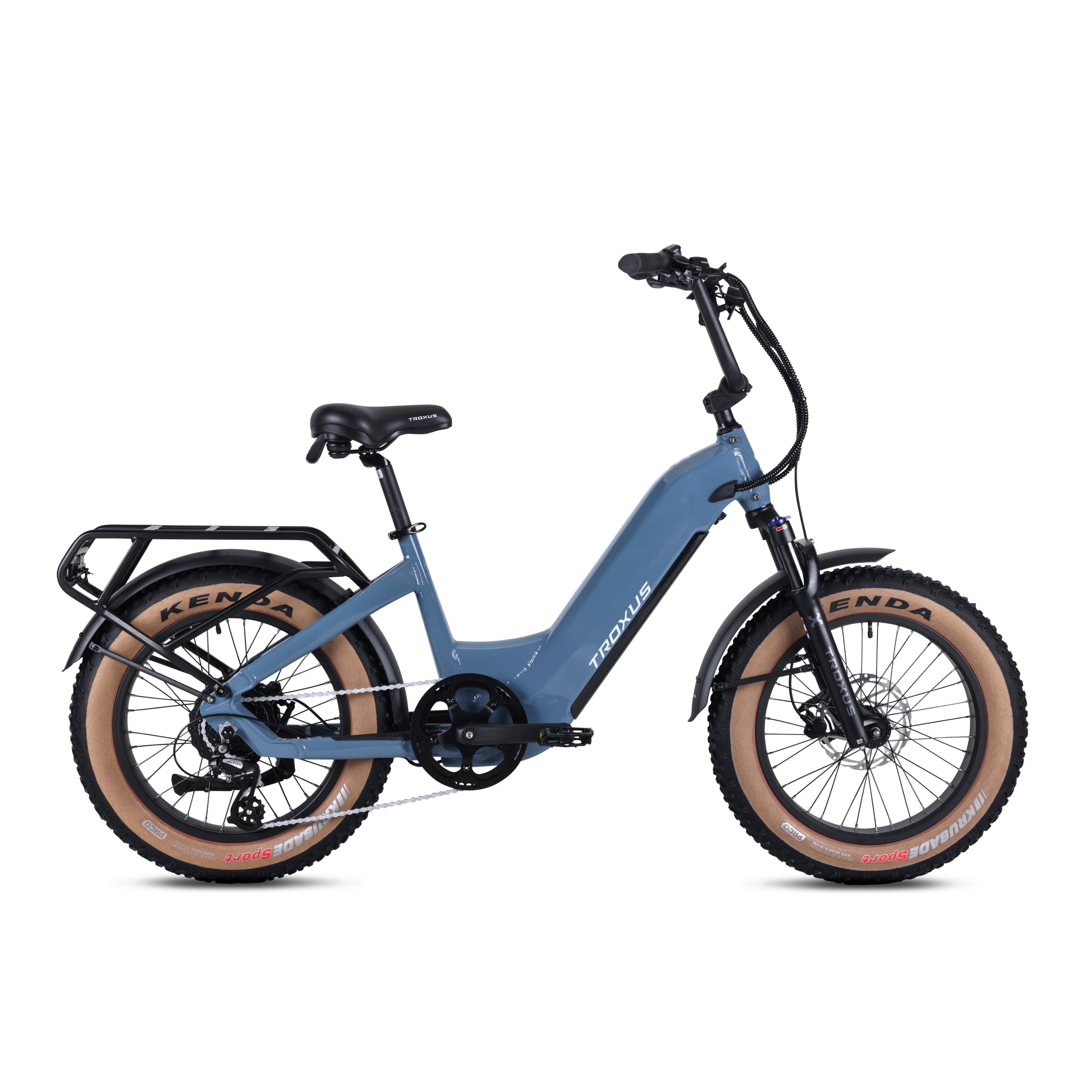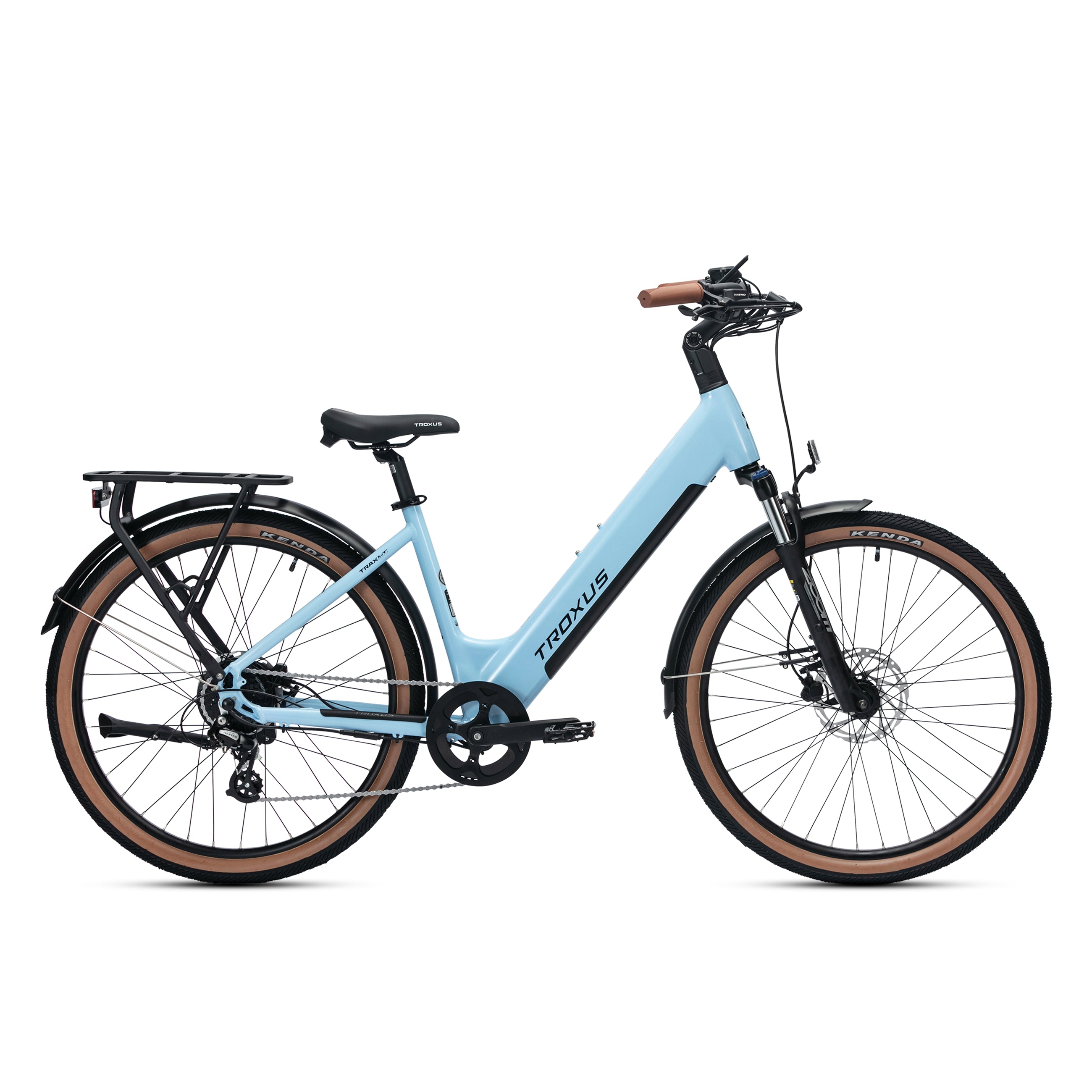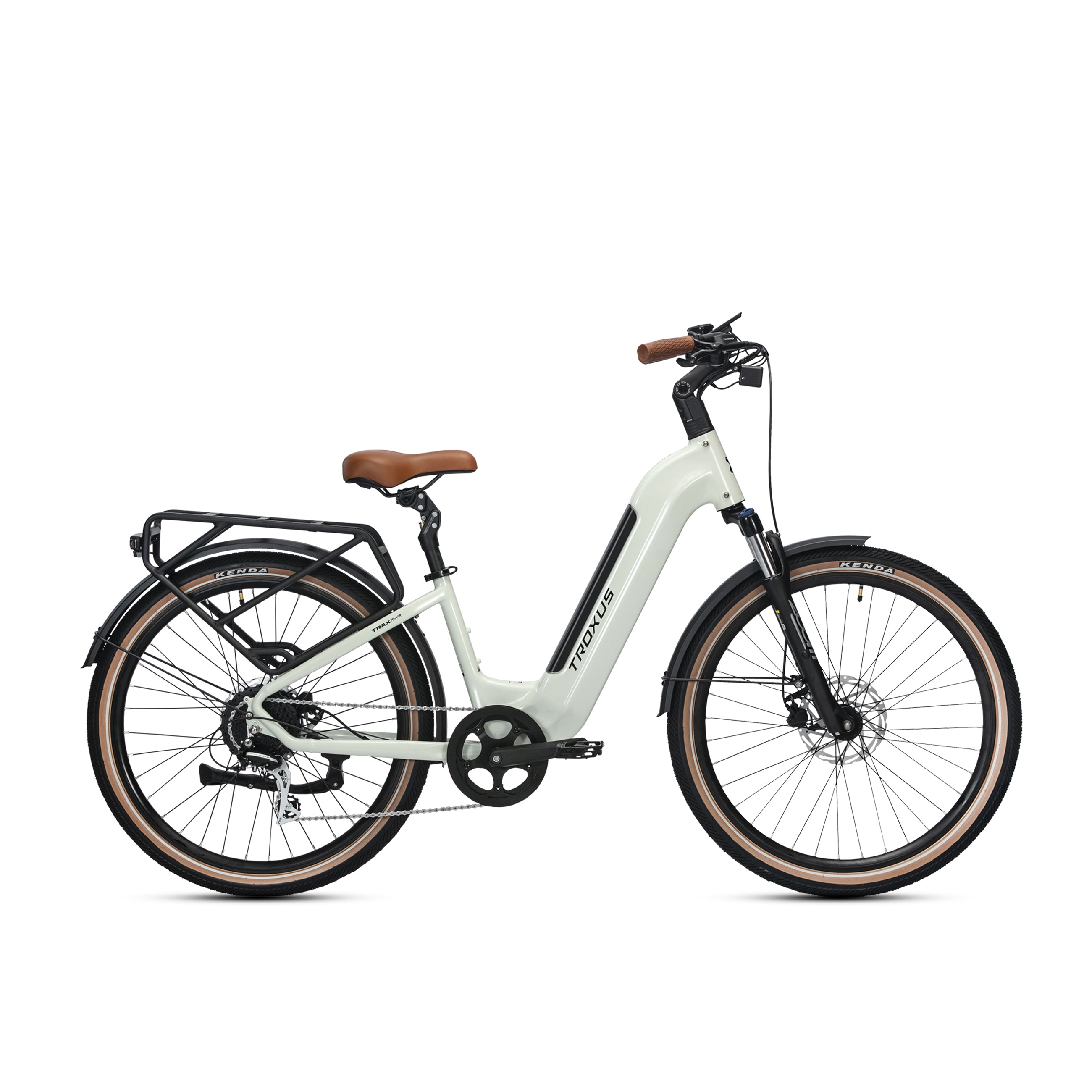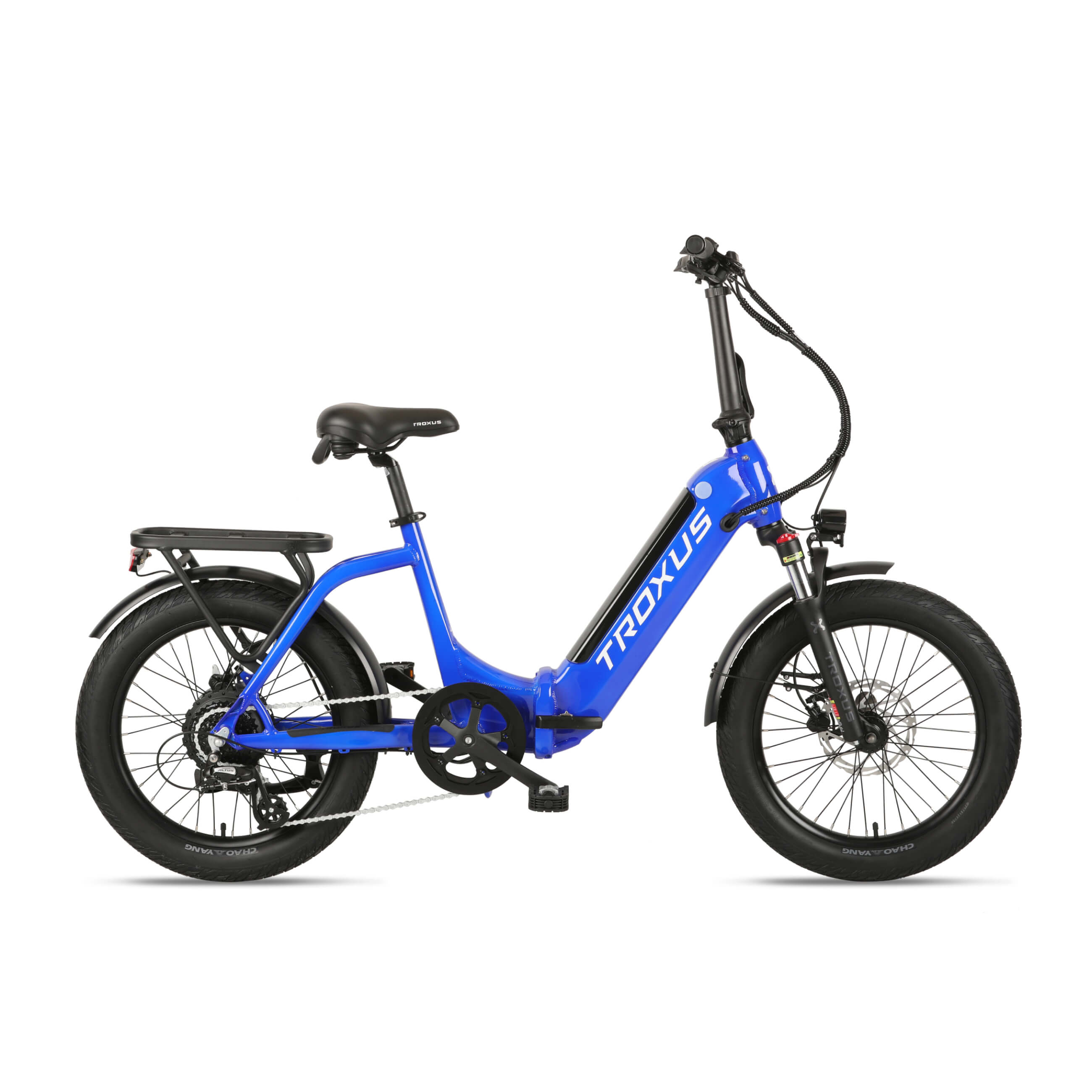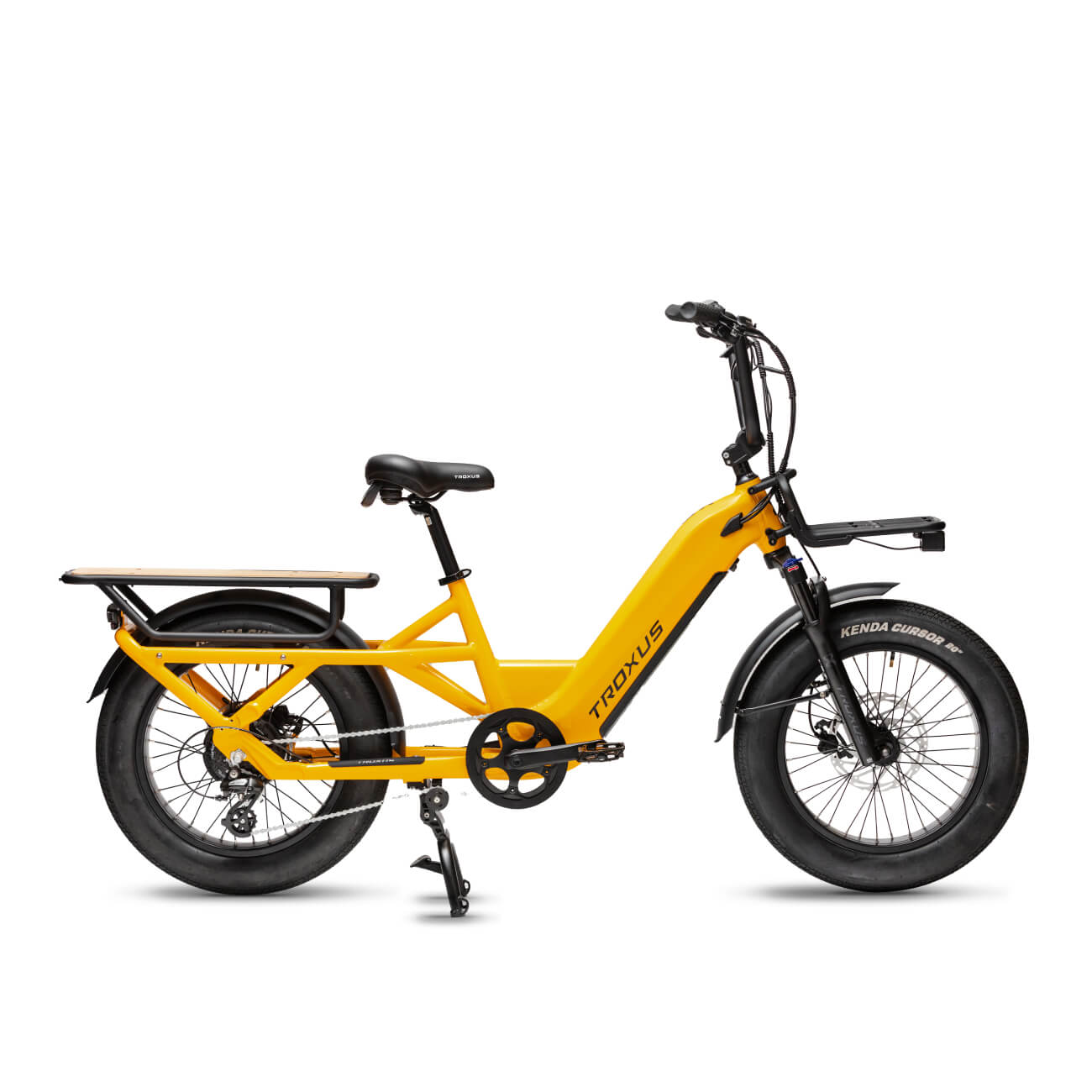In a world where climate change is not just a buzzword but a reality we can feel in extreme weather events and shifting ecological patterns, the urgency for sustainable living has never been greater. Transportation is central to this conversation, with traditional vehicles contributing extensively to carbon emissions. Emerging as a beacon of hope in urban and outdoor settings, electric bikes (e-bikes) are igniting a new wave of sustainable mobility. This extensive examination provides insight into how electric bikes are not only transforming personal travel but also reshaping our cities and rural landscapes to be more environmentally friendly – one ride at a time.
Content
The Green Revolution on Two Wheels
Moving Forward to Save Resources
Health and Well-being in Motion
Navigating the Roadblocks to E-Bike Adoption
Adapting Infrastructure and Policies
Riding the E-Bike Wave to a Sustainable Future
E-Bikes as the Silent Revolution
The Electric Bike Evolution
Electric bikes have been on the scene for decades, but recent technological advancements have propelled them into the limelight as a stylish, efficient, and fun solution for eco-conscious individuals and communities. What makes them tick, and how do they achieve the harmonious balance between green transportation and modern convenience?
Unpacking the Electric Bike Technology
Electric bikes boast an innovative design that integrates a conventional bicycle with a battery-powered motor, providing varying levels of assistance and interaction based on the rider's preference. Understanding how these components work together is foundational to appreciating the efficiency and versatility of electric bike technology.
How Electric Bike Motors Empower Rides
The electric motor serves as the quintessential powerplant of an electric bike, acting as the primary source of assistance to augment the rider's pedaling efforts. These motors come in various configurations, each playing a crucial role in shaping the bike's overall performance and energy efficiency. For instance, direct-drive hub motors are known for their exceptional efficiency, making them a popular choice among riders seeking optimal power utilization. On the other hand, mid-drive motors provide a more natural riding sensation, especially when navigating inclines, enhancing the overall biking experience for enthusiasts.
The Role of E-Bike Batteries
Batteries are the lifeblood of e-bikes, acting as the powerhouse that stores and provides energy to the motor, propelling riders forward. The continual evolution of battery technology, with the prominent use of lithium-ion cells, has significantly boosted the energy density and durability of electric bike batteries, offering riders extended journeys and enhanced performance. In this segment, we will delve into the critical role of battery management systems (BMS) in fine-tuning performance, maximizing efficiency, and ensuring the long-term health of electric bike batteries.
Continue reading: Key Features to Consider When Buying an Electric Bike for Adults
Discovering the Many Faces of Electric Bikes
Electric bikes are a versatile option in the realm of cycling, offering a wide array of choices to accommodate a diverse range of riders and purposes. From urban commuting to off-road adventures, there's a perfect electric bike out there for every rider. Understanding the nuances between pedal-assist and throttle-controlled models, along with the unique features that distinguish them, is key in selecting the ideal electric bike that aligns with individual preferences and requirements.
Pedelecs vs Throttles
Pedal-assist, also known as pedelec, electric bikes are designed to respond to the rider's pedaling activity by detecting the amount of effort exerted and adjusting the level of assistance accordingly. This feature provides a tailored and seamless riding experience, enhancing the rider's control and efficiency on various terrains. On the other hand, throttle electric bikes offer immediate electric motor activation with a simple twist of the throttle, catering to riders who prefer a relaxed and easy-going mode of transportation. Each type of electric bike offers a distinct riding experience, catering to different preferences and styles of cycling.
Tailoring E-Bikes for Special Environments
Specialty electric bikes, like cargo bikes ideal for carrying groceries and fat-tire models perfect for exploring rugged trails, have played a crucial role in establishing electric bikes as a practical choice for various needs. Whether you need to transport your children to school safely or crave adventure on challenging off-road paths, the market now offers a diverse range of electric bikes tailored to handle these tasks effortlessly. These electric bikes are crafted with a sophisticated balance of durability and performance, ensuring that riders can conquer any terrain with ease.
The Green Revolution on Two Wheels
Electric bikes are not just high-tech novelties for gadget enthusiasts; they represent a potent strand in the collective endeavor to reduce carbon emissions and mitigate climate change. This section dives into the various environmental benefits that electric bikes offer.
Reducing Our Carbon Footprint
The most immediate and tangible benefit of electric bikes lies in their ability to provide a sustainable mode of transportation, leading to a noteworthy reduction in greenhouse gas emissions, particularly in densely populated urban areas. By quantifying and highlighting the positive impact of electric bike adoption on the quality of the air we breathe and the overall climate we share, we can effectively motivate more individuals to consider making the eco-friendly switch to electric bikes.
Pollution-free Commutes
The combustion of fossil fuels in traditional vehicles not only adds to the greenhouse effect but also releases harmful air pollutants like nitrogen oxides, carbon monoxide, and volatile organic compounds. These pollutants are linked to respiratory diseases, smog formation, and environmental degradation, impacting ecosystems and human health. On the other hand, electric bikes, powered by clean energy from the grid, offer a pollution-free alternative that can significantly reduce air pollution levels, improving both air quality and public health.
Electric Bikes and Noise Pollution
In addition to mitigating air pollution through their eco-friendly operation, electric bikes offer a silent alternative to gas-guzzling vehicles, contributing significantly to the reduction of noise pollution in urban areas. This shift towards quieter modes of transportation not only fosters a more peaceful and livable urban environment but also brings about indirect yet substantial advantages for mental well-being and overall quality of life.
Academic Research in E-Bike Efficacy
The growing body of academic research papers focusing on e-bikes is beginning to unveil a consistent narrative highlighting their superior efficiency and eco-friendliness. According to CleanTechnica, "an e-bike study carried out by Walk Bike Berkeley in 2019 found that the “fuel” efficiency of e-bikes was anywhere from 2200 to 3800 MPGe, which meant that e-bikes were some 20 to 35 times more efficient to operate than EVs, and they came with with far lower embodied energy and carbon."

Moving Forward to Save Resources
Beyond the direct emissions savings, electric bikes also excel in terms of resource utilization. By requiring fewer materials to produce, e-bikes contribute to a more sustainable manufacturing process. Additionally, their compact design demands less space to operate and park, making them a practical and environmentally friendly transportation choice.
A Closer Look at Electric Bike Energy Consumption
Electric bikes, powered by their remarkable efficiency in converting stored energy into kinetic motion, are leading the way in sustainable transportation solutions. This eco-friendly mode of travel not only offers significant monetary savings for riders but also plays a crucial role in conserving the planet's finite resources for future generations.
Wattage Wars and Energy Use
The power of an electric bike's motor, which is typically measured in watts, plays a significant role in the overall performance of the electric bike. For new buyers looking to understand how different motor sizes and types impact energy consumption, delving into the intricacies of wattage is crucial. Contrary to common misconceptions, higher wattage doesn't necessarily equate to higher energy consumption. This is due to the advancements in motor design and control mechanisms that optimize efficiency while maintaining power output. By demystifying the concept of wattage in electric bikes, riders can make informed decisions tailored to their specific needs and preferences.
The Economics of Electric Bike Charging
Electricity for electric bike charging is not only cost-effective when compared to gasoline or diesel but also contributes significantly to reducing carbon emissions, thereby underlining the economic and environmental benefits of electric bikes. In the upcoming guide, we will provide detailed instructions for readers on establishing a practical, sustainable, and eco-friendly charging station at home or workplace. This will include insights on leveraging renewable energy sources to power e-bikes whenever feasible, ensuring a greener and more efficient mode of transportation. As per Discerning Cyclist, two primary factors influence the charging cost of an electric bike: the watt-hour (Wh) rating of the e-bike and the electricity rate (i.e., cost per kWh). The average charging expenses for e-bikes in various countries in 2023 are approximately £0.21 in the UK and $0.08 in the U.S.
The Minimalism of E-Bike Manufacturing
The environmental impact of vehicle production is often overlooked, with massive plants and complex supply chains driving demand for natural resources. Electric bikes, with their simpler design and parts, offer a more resourceful approach to personal transportation that leaves a lighter touch on the Earth.
Sustainable Sourcing and Manufacturing
Leading electric bike companies are recognizing the importance of sustainability and are shifting towards utilizing sustainable and recycled materials in their products. This shift not only reduces the sector's dependence on newly extracted resources but also contributes to environmental conservation efforts. In our showcase, we will highlight forward-thinking manufacturers who have made conscious decisions to prioritize sustainable practices throughout their entire supply chain, promoting a greener and more eco-friendly approach in the industry.
Health and Well-being in Motion
Electric bikes, commonly known as e-bikes, are not just a mode of transportation but a catalyst for promoting active living and mental well-being. By effortlessly blending commuting or recreational riding with health-conscious pursuits, electric bikes are at the forefront of sustainable living goals. Their user-friendly design and eco-friendly nature make them a versatile choice for individuals seeking a greener and healthier lifestyle.
The Physical Benefits of E-Bike Riding
While some purists might raise an eyebrow at the idea of motor-assisted cycling as a form of exercise, the reality is far from complacency. Electric bike riding offers a compelling mix of cardiovascular activity and muscle engagement that can have a profound impact on overall health.
The Science of E-Bike Fitness
Scientific studies are delving into the health impacts of electric bike usage, shedding light on the benefits of the daily exercise routine electric bike enthusiasts experience. In our discussion, we will delve deeper into the intriguing calorie burn rates and the muscular advantages associated with consistent electric bike riding. This exploration aims to debunk the prevalent myth that electric bikes solely handle the effort, highlighting the active role riders play in their workout.
Accessibility and Inclusivity
The physical assistance offered by electric bikes not only broadens the appeal of biking to a wider demographic but also introduces new possibilities for individuals who may have felt limited by age or preexisting health conditions. By providing an added boost, electric bikes empower more people to experience the joy of cycling while reaping its physical and mental rewards. This inclusive feature of electric bikes represents a significant shift, opening doors to a broader audience and democratizing access to the numerous benefits that cycling has to offer.
Mental and Emotional Wellness on E-Bikes
The mental health benefits of engaging in regular physical activity, such as cycling, are widely recognized in various studies. Electric bikes, with their electric assistance, not only promote physical well-being but also act as a gateway to holistic gains for individuals. The stress reduction achieved through a seamless and delightful ride can significantly enhance mood and provide a mental sanctuary, allowing individuals to temporarily detach from the burdens and stresses of contemporary life.
E-Bikes as Stress Busters
Stress is a significant contributor to a wide range of health problems, affecting both physical and mental well-being. The daily commute, often filled with traffic congestion and time pressures, can be a major source of tension for many individuals. In this exploration, we will delve into the transformative potential of electric bikes in turning this stress-inducing journey into a calming and pleasurable experience. By enhancing not just the rider's day but also their overall long-term health and well-being, electric bikes offer a promising solution to the challenges posed by daily commuting stress.
Exploring Nature with Ease
The motorized assist provided by electric bikes not only facilitates exploration and adventure in natural settings but also offers a seamless means for urban dwellers to enjoy access to green spaces. Additionally, for outdoor enthusiasts, electric bikes present an opportunity to conquer more challenging trails that were previously out of reach. In the coming posts, we look forward to sharing an array of inspirational stories showcasing electric bike excursions that have not only expanded riders' horizons but also ignited a passion for outdoor exploration.
Navigating the Roadblocks to E-Bike Adoption
Despite their benefits, electric bikes still face hurdles in widespread adoption, from cost barriers to policy and infrastructure limitations. Addressing these challenges is crucial for realizing their full potential as a sustainable mobility solution.
Breaking Down the Cost Barrier
The initial cost of purchasing an electric bike may present a substantial investment, particularly for individuals who are used to the lower price points associated with traditional bicycles. In the upcoming discussion, we will delve into various approaches and alternatives aimed at rendering electric bikes more budget-friendly. These solutions could range from leveraging local incentives tailored to electric bike adoption, exploring flexible financing options, to considering the opportunities available within the second-hand market for electric bikes.
The Affordability Equation
While it's true that electric bikes typically have a higher upfront cost compared to traditional bicycles, it is important to consider the long-term financial benefits they provide. Beyond the initial investment, electric bikes offer significant savings over time through reduced maintenance costs, lower fuel expenses, and potential health benefits. This section aims to delve into the comprehensive financial advantages of e-bikes, assisting potential buyers in evaluating the overall affordability and value of owning an e-bike.
Adapting Infrastructure and Policies
The built environment and the regulatory landscape are crucial factors that significantly influence transportation choices. Specifically focusing on electric bikes, due to their distinctive needs, it is essential to develop infrastructure specifically designed to support them. This includes creating bike lanes, charging stations, and implementing policies that encourage the use of electric bikes for a sustainable and efficient transport system.
Designing for E-Bikes
Bike lanes and parking solutions designed for traditional bicycles may not always meet the requirements of electric bike riders. In our discussion, we will delve into the most effective strategies for city planners to take into account when incorporating electric bike infrastructure into the urban landscape. This includes considerations such as the establishment of designated charging stations and the implementation of secure storage facilities to cater to the specific needs of electric bike users.
Navigating Legal and Policy Frameworks
Electric bikes, with their electric assistance, present a hybrid nature that blurs the distinction between traditional bicycles and motor vehicles. This unique characteristic can sometimes create confusion in the realm of traffic laws and environmental policies. In the forthcoming discussion, we will delve into the intricate legal standing of electric bikes across different jurisdictions. Our aim is to champion the establishment of unambiguous and uniform regulatory frameworks that support and encourage the widespread utilization of electric bikes.

Riding the E-Bike Wave to a Sustainable Future
The potential of electric bikes goes beyond personal benefits, offering a vision of sustainable mobility that is inclusive, health-promoting, and delightful. It's time for individuals, communities, and policymakers to fully embrace electric bikes as a key component of a greener and more livable future.
Personal Commitment to Change
For numerous individuals, opting to switch to an electric bike signifies a profound personal dedication to minimizing their environmental impact and embracing a lifestyle centered on sustainability. In our guide, we aim to offer a comprehensive array of practical advice and valuable insights tailored for individuals contemplating this shift. From selecting the optimal electric bike model that suits your needs to effectively incorporating it into your daily activities, we will delve into the nuances of this transition to empower you with the knowledge needed to make informed decisions.
Community Building with E-Bikes
Electric bikes have a remarkable ability to build strong community connections. This is evident through the shared joy of group rides, where individuals come together to enjoy the freedom and adventure that e-bikes offer. Additionally, the collaborative efforts in improving infrastructure and advocating for e-bike use highlight a united approach towards sustainable transportation. This section will delve into how electric bikes are sparking a collective mindset focused on sustainability, social engagement, and a shared passion for eco-friendly mobility solutions.
Policy Pathways for E-Bike Integration
Policymakers play a crucial role in unlocking the full potential of e-bikes within the broader scope of sustainable urban planning and transportation policy. By implementing strategic measures, such as providing tax incentives, developing infrastructure, and fostering public-private partnerships, governments and institutions can effectively promote electric bike adoption. These initiatives not only encourage environmentally friendly transportation but also contribute to reduced traffic congestion and improved overall urban livability.
E-Bikes as the Silent Revolution
Electric bikes are more than the sum of their parts; they represent a mindset – a way of thinking about transportation that prioritizes the health of our planet and our people. As we roll into the future, electric bikes stand not as a mere fad but as a revolution in motion, offering a silent yet powerful alternative to the environmental challenges of our time. It's time to g. saddle up, explore the world, and pave the way to a more sustainable tomorrow with e-bikes.


